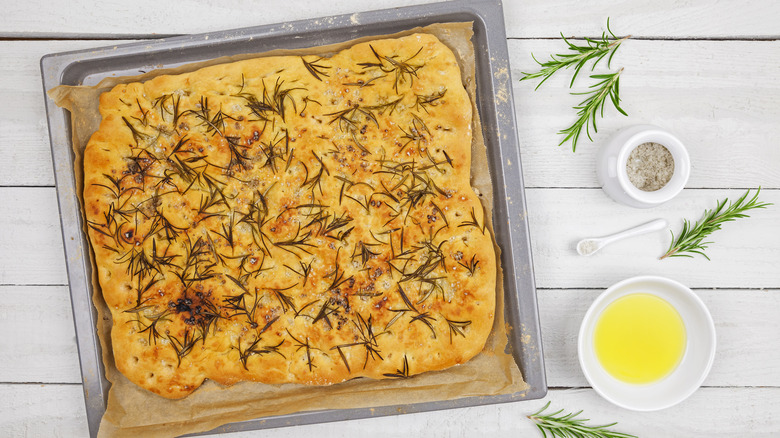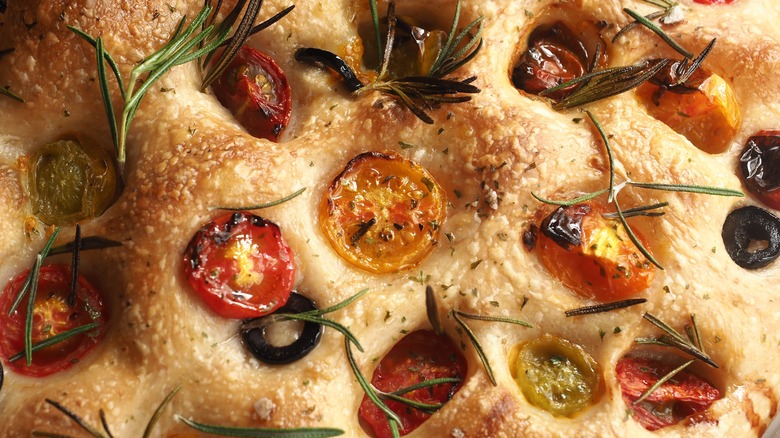Keep Decorated Focaccia Toppings Vibrant With This Key Technique
Bread is straightforward enough that it's a useful ingredient in plenty of dishes (sandwiches get a big shoutout here), but it isn't typically eaten plain as it is on its own. There are exceptions though, and focaccia is a delicious one which can absolutely be served by itself, and your guests will still find themselves reaching for it the whole evening. It's sometimes seen as similar to pizza dough, and you can use pizza dough to make focaccia, but focaccia is lighter, made with much more yeast, and uses plenty of olive oil. It's fairly common to garnish baked focaccia bread with toppings, and if you do so properly, you'll make the dish look more impressive to guests as well as taste good.
For guidance on this, Chowhound spoke exclusively with chef Luca Corazzina, the chef de cuisine at the Italian restaurant OLIO E PIÙ. According to Corazzina, there are certain tried-and-true toppings that can make focaccia really pop out visually, but it also matters when you top them onto the bread: "To keep the colors of your toppings vibrant, it's best to add delicate or colorful ingredients, like edible flowers or fresh herbs, after the focaccia has finished baking." These herbs can include rosemary, thyme, and even a sprinkle of oregano.
Garnishing your focaccia bread
Those examples are just your basic herbs, though, and you can get more colorful than that. If you're interested in Luca Corazzina's suggestion of trying edible flowers, you might consider something bright like lavender or pansies. With edible flowers, you also open up the option of making focaccia bread artwork. Plenty of bakers enjoy decorating their focaccia with edible flowers which have fake stems underneath them, made from long, slender chives. You can design a full garden on your dough, so as long as you do it after focaccia is done baking for maximum vibrancy.
What if you're interested in toppings which are a little more substantial than flowers or herb sprigs — which go on top of the focaccia before baking? Cherry tomatoes and Kalamata olives are common examples, but they're heavier and have more moisture, which you need to consider before baking them. According to Corazzina, you can still keep them sufficiently vibrant and juicy by using the same olive oil you used to coat the bread: "For heartier toppings like vegetables, brush them lightly with olive oil to prevent drying out during baking. Also, avoid overbaking the focaccia, as prolonged heat can dull colors." To protect any leftovers after you're done eating, you can store focaccia in the freezer after cutting it into smaller portions; leaving it in the fridge too long will eventually dry out the entire loaf.

